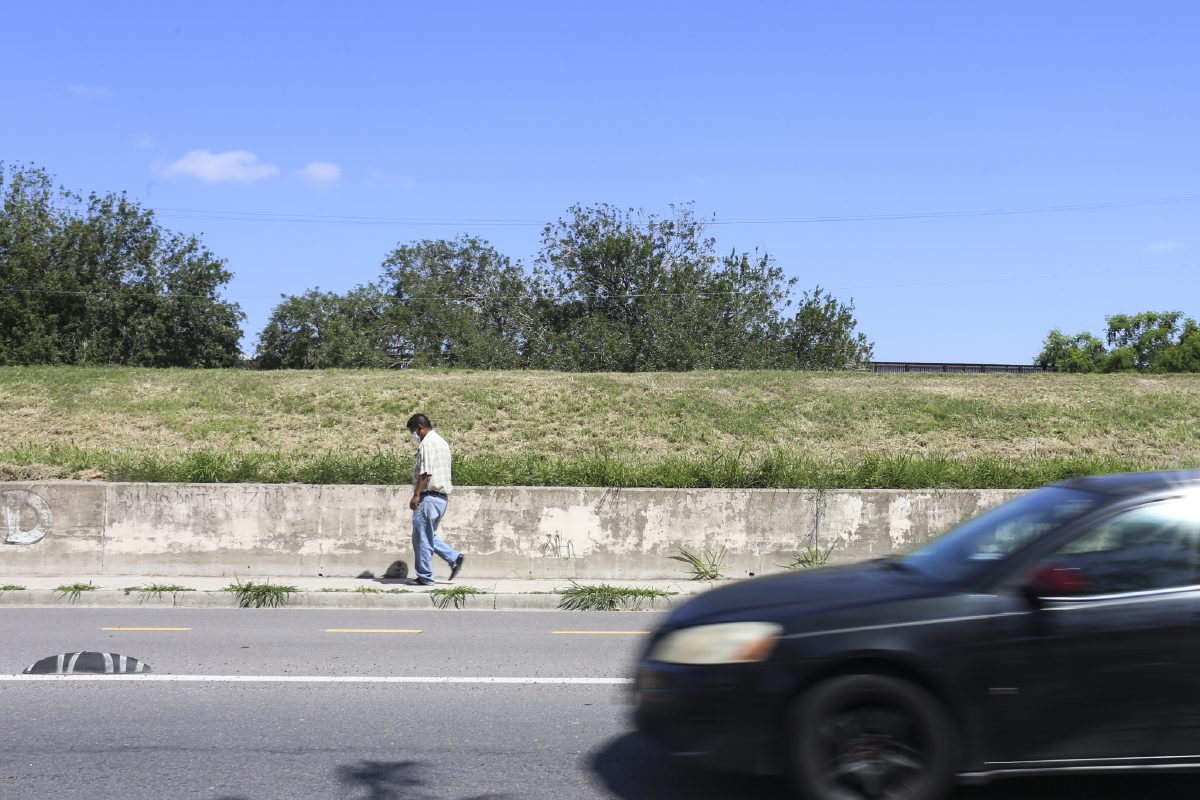
The agenda of Tuesday’s regular meeting of the Cameron County Commissioners Court included a public hearing on a proposal to create the Tax Increment Reinvestment Zone necessary for a Brownsville downtown riverfront redevelopment project to proceed.
The TIRZ is a tool offered by the state that reimburses developers for up-front investments in infrastructure improvements through incremental increases in property taxes once a project is complete. It serves as a mechanism for getting major projects done that might not get done otherwise.
California-based developer Sam Marasco worked with the city of Brownsville for a number of years pursuing his proposed via Americas mixed-use riverfront project, but ultimately was unable to get the city to agree to create the necessary TIRZ for the project to proceed to the next step. He had been lobbying for a TIRZ covering the riverfront between Gateway and B&M international bridge, plus some portion of former rail yard north of Sam Perl Boulevard.
In June 2020, the city informed Marasco that via Americas — officially dubbed the Riverfront and Lower Railyard Redevelopment Program and Project — was not feasible for various reasons, among them the fact that a necessary change to the Texas Tax Code had not yet been obtained by the developer and the necessary riverfront property not yet acquired, and was pulling city staff off the project.
The county picked up the thread in an effort to move the project alive and got the city on board to the extent that City Manager Noel Bernal testified last year in support before the state senate. On Tuesday commissioners heard from a handful of speakers, including Marasco, on why they believe the idea is feasible and creation of a TIRZ warranted.
Mark Yates, the county’s director of economic development and community affairs, prefaced the hearing by saying that riverfront is a “concept, not yet a project” at this point and that the undertaking is multi-layered, complex and requires planning and cooperation of many agencies.
He noted that at last year’s legislative session the county had won senate approval of the necessary changes at the state level and was on the verge of winning approval in the house, with no objections from the governor’s office, when unforeseen circumstances — a walkout by House Democrats to prevent passage of GOP voting legislation — threw a wrench in the works.
Yates said he thinks the county will get what it needs in the next session. Another issue that needs to be resolved, however, is overlap of the proposed Cameron County TIRZ No. 1 for the riverfront development and the city of Brownsville’s already-established TIRZ No. 3 downtown, he said.
Yates described Tuesday’s public hearing as a “procedural step in creating the TIRZ” and said that in two weeks, for the next commissioners court regular meeting, he’ll bring “resolutions, orders, boundaries and maps that create the TIRZ,” at which time commissioners can vote on it, and asked commissioners for direction in ensuring he provides the proper documents.
“The time is now to move this concept forward and help it evolve into a project,” Yates said.
Sam Manatt, who owns a portion of the riverfront property in question and represented other riverfront property owners during the hearing, read excerpts from a study of a riverfront development’s potential impact conducted by consultant Hunter Interests Inc. and commissioned by the city 21 years ago.
“The study area’s proximity to the Rio Grande … can and should be reviewed as a tremendous resource and agent for the revitalization,” Manatt read.
The study concluded that the riverfront represented a “critical asset of the city’s future and one that should receive priority.” The type of mixed-use redevelopment envisioned — including “cultural events, restaurants, retail and possibly residential as well” closely describes Marasco’s plans for via Americas. According to the study, the impact of riverfront redevelopment on downtown Brownsville would be “significant on several levels,” Manatt read.
The hearing also heard from Hector Gonzalez, a commercial officer with Lone Star National Bank who is also involved with the Cameron County Housing Finance Corporation; Diane Garza, Brownsville resident and commissioner with the Texas Commission on the Arts; and Raul Mendez, a pastor and riverfront property owner, all of whom offered strong support for the riverfront TIRZ proposal.
John Chosy, assistant city attorney from 2007 to 2015, also spoke during the hearing, noting that he first became involved with Marasco and the riverfront project in 2007.
“I spent a lot of time working on it and it’s always been really exciting to me,” he said. “I think that this is a terrific project and one that’s going to benefit not just the city of Brownsville but the entire county. … (Marasco) has got everything laid out on paper, he’s made his contacts, he’s pretty close to ready to go, he just needs to have this TIRZ … to get the show on the road.”
Marasco, speaking last, credited Chosy for creating the “mechanics” that would allow the eventual removal of the border fence between the two bridges and replacement of the earthen levees with a concrete levee for via Americas. Marasco said moving forward with the TIRZ, plus utilization of a levee-improvement district, will help make the concept/project “bulletproof from our standpoint.”
“I think we’re finally at the threshold of making it happen, because of the county’s true leadership,” he said.




